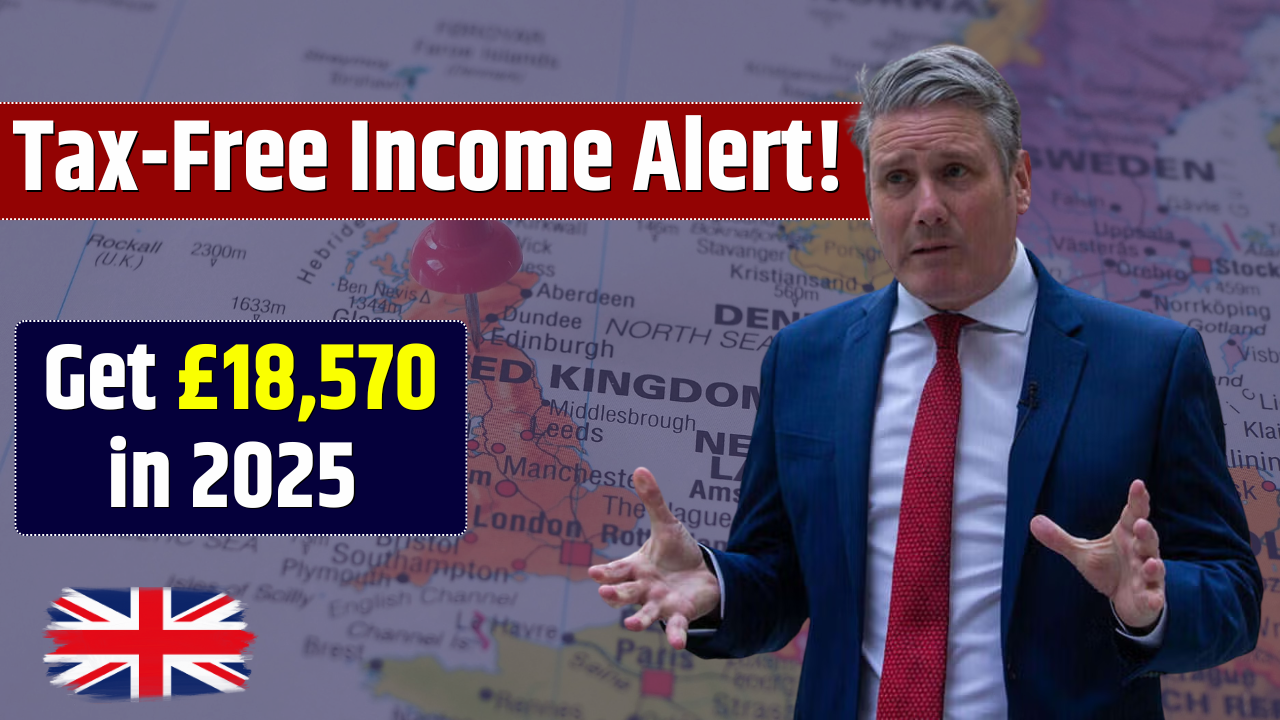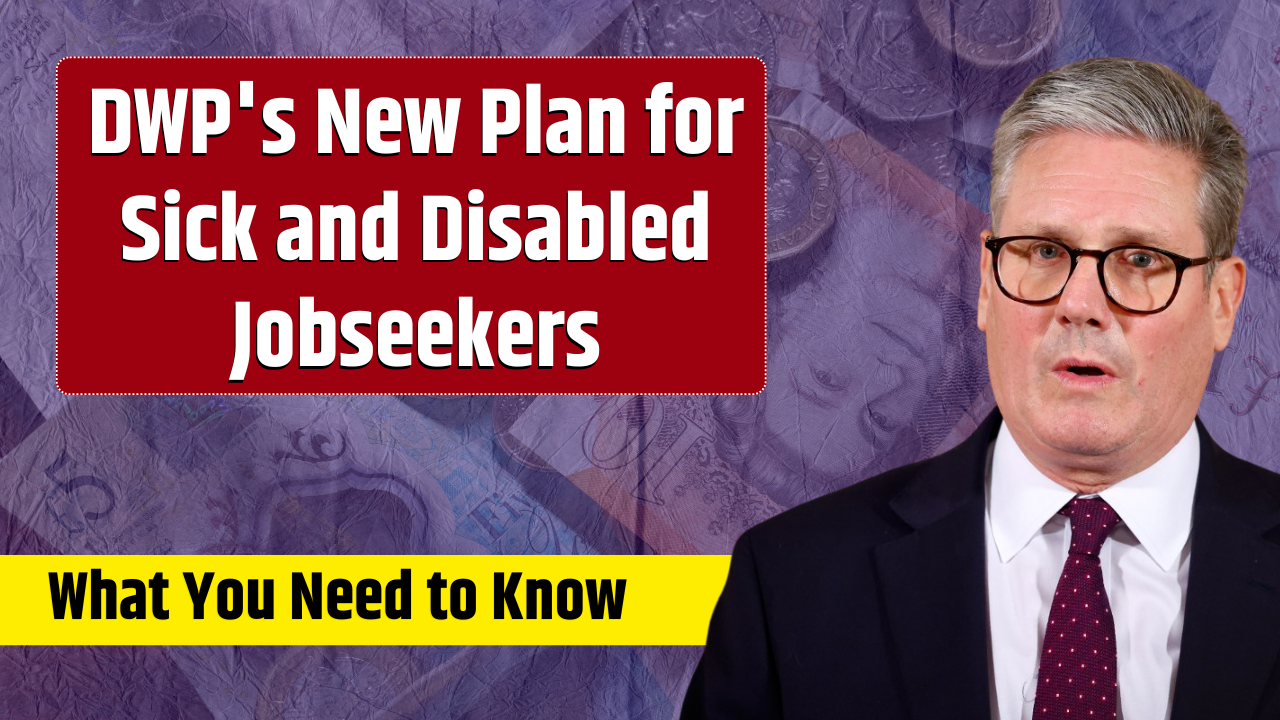If you live in the UK and earn a modest income, you may be able to earn up to £18,570 tax-free in 2025—legally and without claiming a single penny in benefits. This isn’t a payment from the Department for Work and Pensions (DWP), but rather a clever tax-free income strategy based on HMRC allowances that many people, especially pensioners and part-time earners, can take advantage of.
Let’s break down how this works, who qualifies, and how to maximize your tax-free earnings using the Personal Allowance, Starting Rate for Savings, and Personal Savings Allowance.
How Can You Earn £18,570 Tax-Free in 2025?
This strategy combines three legally allowed income tax breaks in the UK:
| Allowance | Tax-Free Limit (2025/26) | Applies To |
|---|---|---|
| Personal Allowance | £12,570 | Income from wages/pension/self-employment |
| Starting Rate for Savings | £5,000 | Interest on savings (if other income is low) |
| Personal Savings Allowance | £1,000 | Savings interest (basic-rate taxpayers) |
Add them together and you get:
£12,570 + £5,000 + £1,000 = £18,570 tax-free income.
1. Personal Allowance: The Foundation
This is the most well-known allowance. Every UK taxpayer gets £12,570 tax-free income in the 2025/26 tax year.
- Applies to income from wages, pensions, rental income, and some benefits.
- If your income stays below this, you owe no income tax.
Example:
If you’re receiving a State Pension of £12,570 or less, you pay zero income tax.
2. Starting Rate for Savings: The Hidden Gem
This lesser-known tax break allows you to earn up to £5,000 in savings interest tax-free—but only if your non-savings income is below £12,570.
- This is a sliding scale. For every £1 your income exceeds £12,570, your starting rate limit is reduced by £1.
- If your income is exactly £12,570 or less, you get the full £5,000 savings allowance.
Example:
If your only income is a £10,000 pension, you still have a £2,570 cushion under your Personal Allowance—so you get the full £5,000 tax-free savings interest too.
3. Personal Savings Allowance: Bonus for Basic Rate Taxpayers
Even if you lose some or all of the Starting Rate, you may still qualify for the Personal Savings Allowance, which allows:
- £1,000 tax-free savings interest for basic rate taxpayers (income up to £50,270)
- £500 allowance for higher-rate taxpayers (income above £50,271)
- No allowance for additional-rate taxpayers (income above £125,140)
This is in addition to the Starting Rate, not a replacement.
Real-World Example: How It All Adds Up
Let’s say you’re a retired individual with the following income in 2025:
- State Pension: £12,000
- Savings interest: £6,000
How it’s taxed:
| Component | Amount | Tax Status |
|---|---|---|
| State Pension | £12,000 | Covered entirely by Personal Allowance |
| Savings Interest | £5,000 | Covered by Starting Rate for Savings |
| Savings Interest | £1,000 | Covered by Personal Savings Allowance |
| Total | £18,000 | All tax-free |
You owe no income tax at all—even though your total income is £18,000.
Who Can Benefit?
This tax-free structure is ideal for:
- Pensioners with modest pension income and savings
- Part-time workers with low earnings and savings
- Low-income individuals living off savings interest
- Spouses splitting income and savings across accounts
You’re likely eligible if:
- Your total income from wages/pensions is below £12,570
- You earn interest from cash savings, ISAs, or fixed-rate accounts
- Your total income + interest doesn’t exceed £18,570
What Doesn’t Qualify?
Not all income counts toward these allowances:
| Not Covered By This Strategy |
|---|
| Dividends over the £1,000 dividend allowance |
| Rental income exceeding £12,570 |
| Employment income over £12,570 |
| Foreign income (may require separate treatment) |
| Capital gains |
If your non-savings income exceeds £17,570, your Starting Rate is fully eroded and you’ll only get the Personal Savings Allowance.
How to Make the Most of This Strategy
Follow these steps to optimize your tax-free income in 2025:
- Calculate your non-savings income
Add your wages, pensions, and taxable benefits. - Track your interest
Review bank statements, savings accounts, or NS&I accounts. - Spread savings with a partner
Split savings across both accounts to double allowances. - Avoid over-concentration
Keep income under the threshold to avoid losing the Starting Rate. - Use HMRC tools
Try the HMRC tax checker or speak with an adviser.
The ability to earn up to £18,570 tax-free in 2025 isn’t a myth—it’s a smart application of HMRC tax rules. Whether you’re retired, semi-retired, or working part-time, using your Personal Allowance, Starting Rate for Savings, and Personal Savings Allowance can help you keep more of what you earn.
It’s not a DWP payment—but in many cases, it’s worth more than a one-off benefit. With just a little planning, you can unlock real savings and protect your income from tax.
FAQs
Is the £18,570 tax-free income a DWP benefit?
No—it’s a tax rule, not a government payment. It’s based on HMRC allowances.
2. Can I still claim this if I receive benefits like Universal Credit?
Yes, but benefit income doesn’t count toward savings allowances. Check if your savings impact benefit eligibility.
3. Do ISAs count toward these limits?
No—ISA interest is already tax-free and doesn’t count toward these allowances.
What if I earn £20,000 in total?
You’ll likely exceed one or more thresholds and may pay tax on a portion of your income.







